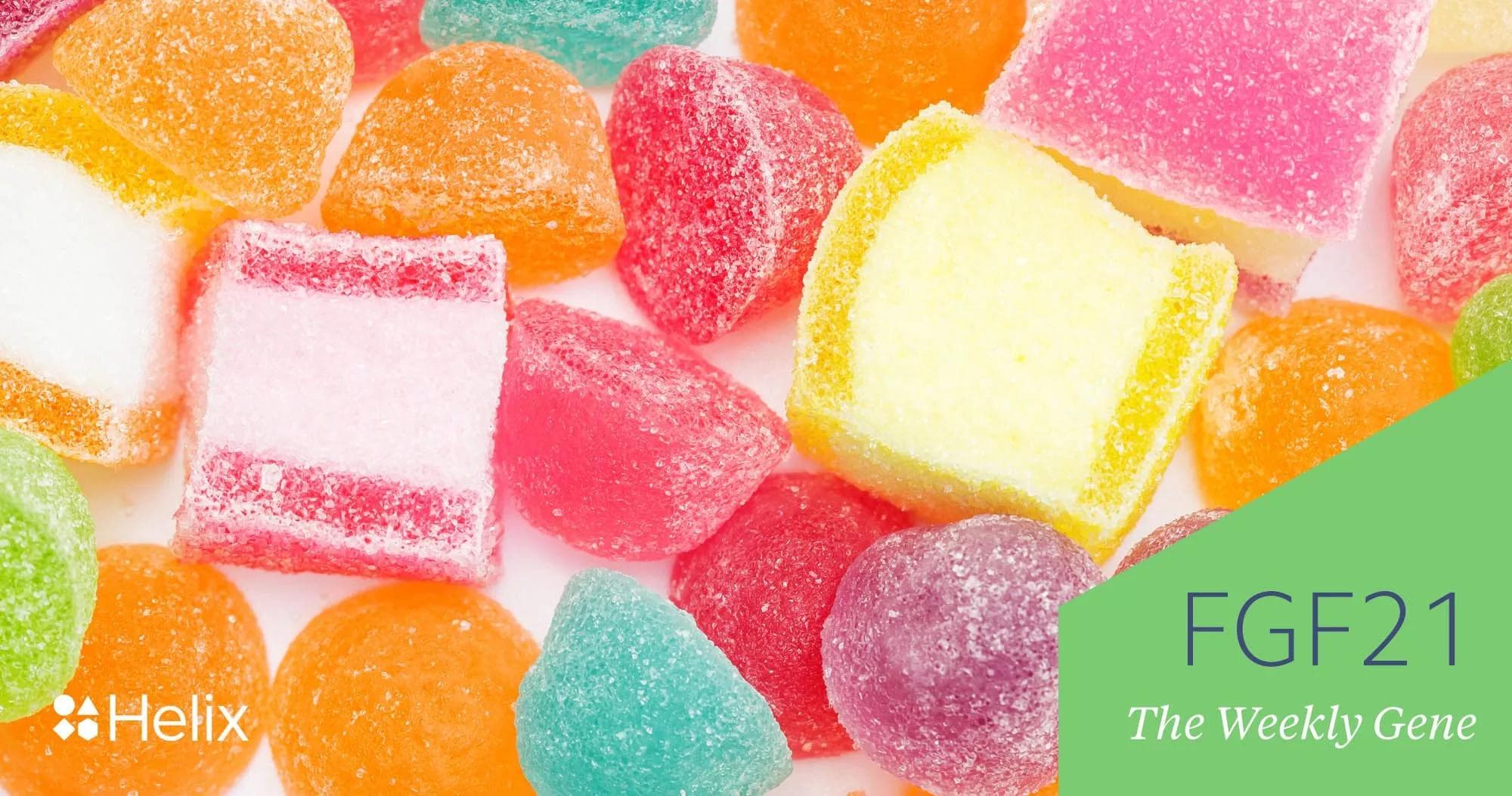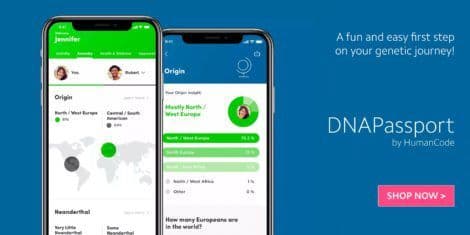Can’t get enough sugar? Your sweet tooth could be partly genetic

It’s not time for lunch or dinner… nonetheless, here you are, standing in front of the fridge. You open the door, but it’s not veggies you’re looking for. Right now, it’s your “sweet tooth” that’s calling. Maybe there’s a slice of pie left?
Sound familiar? Many of us have been there at one time or another, and we often jokingly attribute it to our sweet tooth. But there may actually be something to the idea that humans have an innate hunger for sweet things! Genetic studies have explored what role DNA has in determining our food cravings. Interestingly, these studies have shown that a change in the DNA coding for the FGF21 gene may influence your body’s desire for sugar.
Food gives our bodies the energy, vitamins, and nutrients that it needs in order to function. Accordingly, we’ve evolved ways of finding and consuming foods that are rich in nutrients. One such method is to stimulate cravings that will motivate us to specifically seek out foods that contain a nutritionally important substance. In fact, these cravings can be so strong that they can cause individuals to eat things that aren’t food at all; for example, some people with iron deficiencies may seek out and consume dirt, which can have iron in it. This is an extreme example that demonstrates how nutrient levels can influence eating behaviors. But what about our genetics? Can we inherit DNA that affects our everyday cravings?
How does FGF21 work? FGF21 is believed to operate by suppressing the hedonic reward signaling in the nervous system. Hedonic, a term used to indicate something that gives a pleasant sensation, comes from the Greek word for “sweet.”
When we eat sweets, a pleasure signal is stimulated in the brain which drives more sugar-seeking behavior4. This kind of reward system is meant to drive important cravings for foods that are high in nutritional value (like sugar, which is the primary energy resource for our brain). FGF21 is believed to be released in order to suppress this sensation and prevent overconsumption1,3.
Large scale genetic studies have shown that numerous changes in our DNA can affect our eating behaviors1,2. We’ve previously discussed changes in the DNA coding for proteins known as taste receptors which may affect our ability to sense sweet molecules, but other proteins can also stimulate or influence our cravings. A series of studies have shown that a variant in the gene coding for the protein fibroblast growth factor 21 (FGF21 for short) can affect our eating behaviors1-3. FGF21 is a hormone produced in the liver and other tissues which circulates throughout the body, where it can influence the activity of different organs. Studies in mice have shown that the version of FGF21 found in mice is produced in higher quantities following the ingestion of sugar, suggesting that it may be involved in the regulation of sugar consumption or cravings1,2. Similar research found that mice lacking the ability to produce this version of the FGF21 protein consumed higher amounts of sugar1-3. Collectively, this data indicates that FGF21 may be an important hormone that’s released by the liver in response to dietary sugar in order to signal that enough sugar has been consumed.
To put it simply, FGF21 appears to help animals control the amount of sugar they eat. That said, there are significant differences in physiology between humans and other animals like mice, and it remains to be seen whether FGF21 similarly regulates human sugar consumption, but recent genetic studies suggest that it does.
A change in the DNA coding for FGF21 has been shown in multiple independent studies to be correlated with increased sugar consumption1-3. Despite these correlations, this single base change in the DNA sequence has no predicted functional change to the FGF21 protein—but it could still impact how much of the protein is made, or when it’s made. People who inherit two copies of this version of the FGF21 gene have been shown to consume slightly more sugar on average (about one sweet snack serving more per week) when compared to people who don’t have this version of the gene1. It’s also possible that this single base change is affecting the function of other neighboring genes, but the evidence from mice makes scientists suspect that this genetic variant in humans somehow decreases that ability of FGF21 to regulate sugar cravings.
It’s important to note that your environment and personal choices both play big roles in your diet, and cravings are not solely determined by your DNA. There is no guarantee that you will (or will not) eat more sugar based on your FGF21 gene, because your genetics are only a small part of a much larger picture. But if you’re curious to see how your DNA may be affecting your cravings, you might be interested in products like DNAPassport and BABYGlimpse from HumanCode. You’ll have a fun and simple way to learn a little more about yourself—and you might just learn where your sweet tooth comes from, too.

1Soberg, Susanna et al. “FGF21 Is a Sugar-Induced Hormone Associated with Sweet Intake and Preference in Humans”. Cell Metabolism 25, 1045-1053. (2017): 10.1016/j.cmet.2017.04.009. Web. 22 Dec. 2017
2Chu, Audrey Y. et al. “Novel Locus Including FGF21 Is Associated with Dietary Macronutrient Intake.” Human Molecular Genetics 22.9 (2013): 1895–1902. PMC. Web. 22 Dec. 2017.
3Von Holstein-Rathlou, Stephanie et al. “FGF21 Mediates Endocrine Control of Simple Sugar Intake and Sweet Taste Preference by the Liver.” Cell metabolism 23.2 (2016): 335–343. PMC. Web. 22 Dec. 2017.
4Sasaki, Tsutomu. “Neural and Molecular Mechanisms Involved in Controlling the Quality of Feeding Behavior: Diet Selection and Feeding Patterns.” Nutrients 9.10 (2017): 1151. PMC. Web. 22 Dec. 2017.